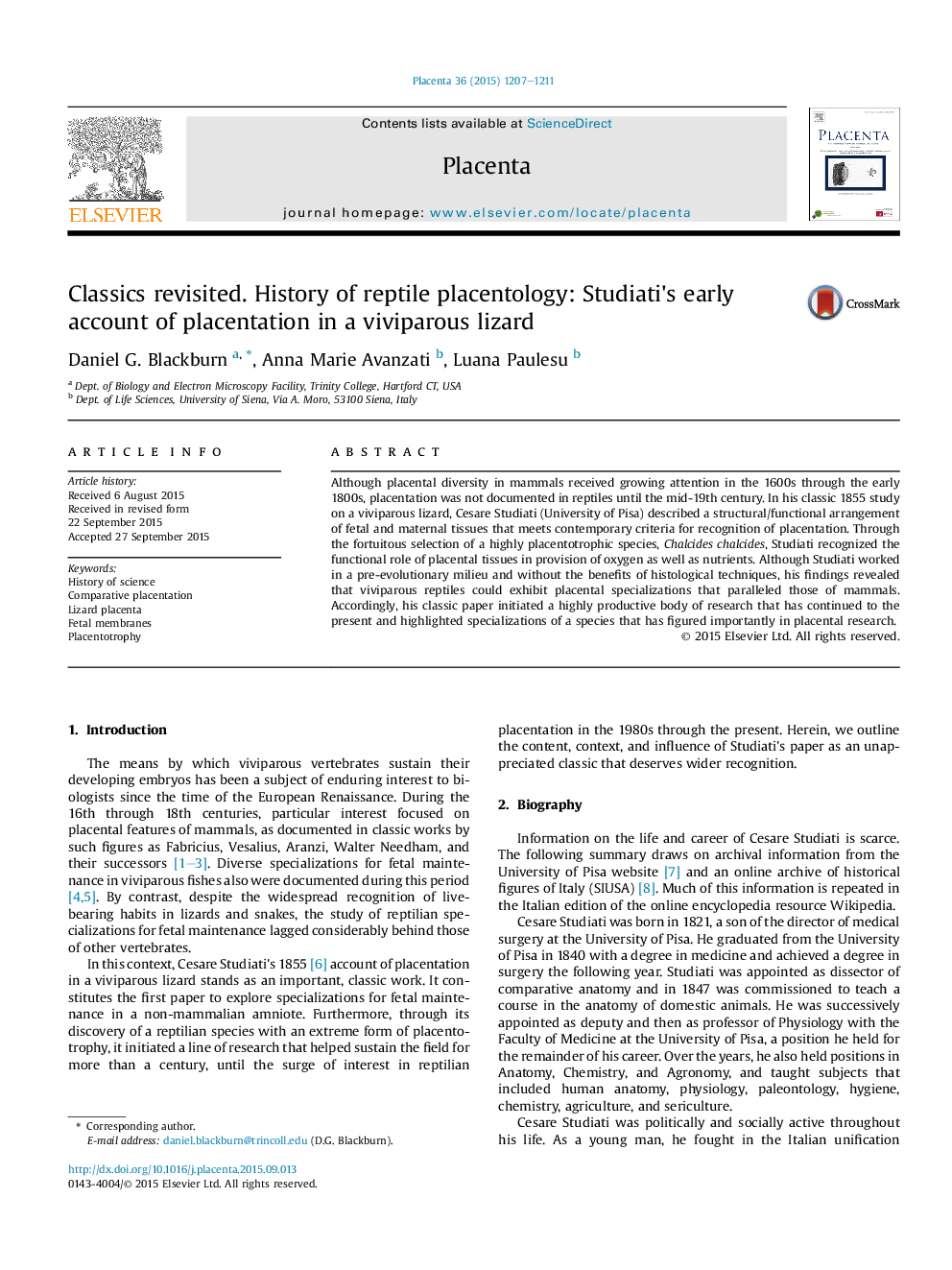| کد مقاله | کد نشریه | سال انتشار | مقاله انگلیسی | نسخه تمام متن |
|---|---|---|---|---|
| 2788443 | 1154433 | 2015 | 5 صفحه PDF | دانلود رایگان |

• Studiati's 1855 study was the first account of placentation in a viviparous reptile.
• It showed that lizard placentas could function in nutrient transfer and gas exchange.
• Though macroscopic, this study documented significant details of placental anatomy.
• Studiati's structural and functional inferences were corroborated by later work.
• The legacy of his classic paper lies in its influence on later 19th century research.
Although placental diversity in mammals received growing attention in the 1600s through the early 1800s, placentation was not documented in reptiles until the mid-19th century. In his classic 1855 study on a viviparous lizard, Cesare Studiati (University of Pisa) described a structural/functional arrangement of fetal and maternal tissues that meets contemporary criteria for recognition of placentation. Through the fortuitous selection of a highly placentotrophic species, Chalcides chalcides, Studiati recognized the functional role of placental tissues in provision of oxygen as well as nutrients. Although Studiati worked in a pre-evolutionary milieu and without the benefits of histological techniques, his findings revealed that viviparous reptiles could exhibit placental specializations that paralleled those of mammals. Accordingly, his classic paper initiated a highly productive body of research that has continued to the present and highlighted specializations of a species that has figured importantly in placental research.
Journal: Placenta - Volume 36, Issue 11, November 2015, Pages 1207–1211